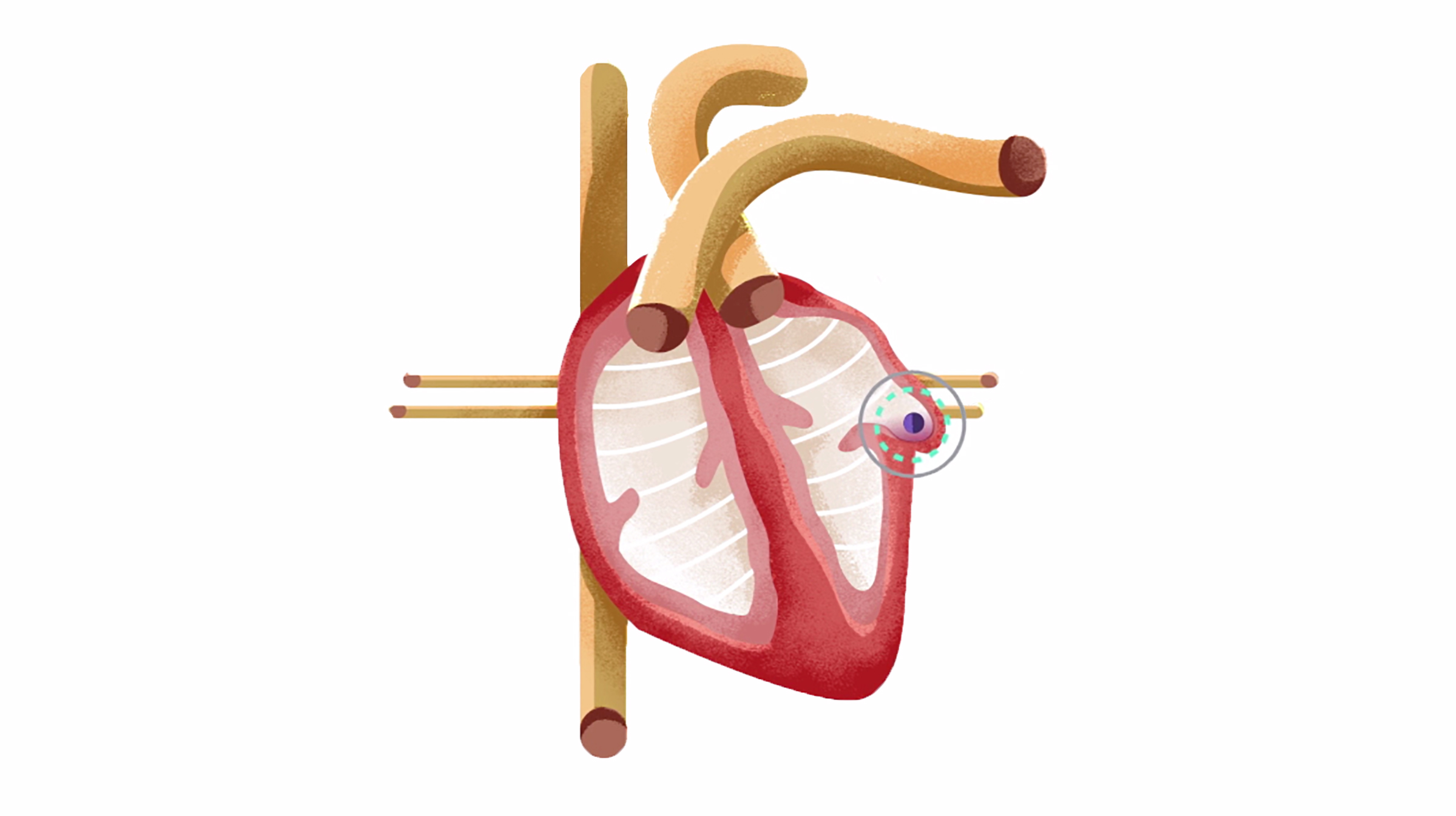Watchman
A One-Time Implant That Helps Reduce AFib Stroke Risk
How does AFib increase stroke risk?
The average person with atrial fibrillation (also called AFib or AF) is five times more likely to have a stroke than someone with a regular heartbeat. That’s because AFib can decrease the heart’s pumping capacity by as much as 30%. Because blood isn’t pumped out of the heart normally, it’s easier for blood cells to stick together and form clots in an area of the heart called the left atrial appendage (LAA), shown in illustration below. When a blood clot escapes from the LAA and travels to another part of the body, it can cut off the blood supply to the brain, causing a stroke.
In people with atrial fibrillation not caused by heart valve problems (the most common type of AFib), more than 90% of stroke-causing clots that come from the heart are formed in the LAA.
Learn more about atrial fibrillation and stroke risk here.

Reducing AFib Stroke Risk
Blood thinners, also called anticoagulants, are an effective way to lower the risk of stroke in people with atrial fibrillation not caused by heart valve problems. Common blood thinners include warfarin (also known as Coumadin®), Eliquis®, Pradaxa®, Xarelto® and Savaysa®.
But some people need an alternative to blood thinners, because they can increase the risk of bleeding. Some bleeding events are minor and easily treated, like a cut taking longer than normal to stop bleeding. In other cases, the bleeding can be life-threatening, such as when bleeding in the brain causes a stroke.
If you have a history of bleeding or a lifestyle, occupation or condition that puts you at risk for bleeding, your doctor may consider an alternative to blood thinners, such as the WATCHMAN Implant.
An Alternative to Blood Thinners
WATCHMAN is a one-time, minimally invasive procedure for people with atrial fibrillation not caused by a heart valve problem (also known as non-valvular AFib) who need an alternative to blood thinners. It’s about the size of a quarter and made from very light and compact materials commonly used in many other medical implants.
More than 150,000 people have left blood thinners behind with WATCHMAN.
Getting WATCHMAN?
The first step to finding out if you’re a candidate for WATCHMAN is making an appointment with a cardiologist to discuss your options.
For more information and to make an appointment, call Marietta Memorial Hospital Department of Cardiology at (740) 568-5207 Extension 2657.
WATCHMAN is for people with atrial fibrillation not caused by a heart valve problem who need an alternative to blood thinners. This website is intended to provide patients and caregivers with some information about the WATCHMAN Implant. It may help prepare you for talking to your doctor about your options for reducing stroke risk.
Important Safety Information
The WATCHMAN and WATCHMAN FLX Devices are permanent implants designed to close the left atrial appendage in the heart in an effort to reduce the risk of stroke.
With all medical procedures there are risks associated with the implant procedure and the use of the device. The risks include but are not limited to accidental heart puncture, air embolism, allergic reaction, anemia, anesthesia risks, arrhythmias, AV (Arteriovenous) fistula, bleeding or throat pain from the TEE (Trans Esophageal Echo) probe, blood clot or air bubbles in the lungs or other organs, bruising at the catheter insertion site, clot formation on the device, cranial bleed, excessive bleeding, gastrointestinal bleeding, groin puncture bleed, hypotension, infection/pneumonia, pneumothorax, pulmonary edema, pulmonary vein obstruction, renal failure, stroke, thrombosis and transient ischemic attack. In rare cases death can occur.
Be sure to talk with your doctor so that you thoroughly understand all of the risks and benefits associated with the implantation of the device.
Cardiac Navigator

Katilyn Seevers, RN
Cardiac Navigator
Department of Cardiology
Marietta Memorial Hospital
400 Matthew Street, Suite 302
Marietta, Ohio 45750
Phone: (740) 568-5207
Mobile: (740) 434-7768
Email: katseevers@mhsystem.org
Is WATCHMAN right for you?
If you have a history of bleeding or a lifestyle, occupation or condition that puts you at risk for bleeding, WATCHMAN may be right for you. But like any medical procedure, WATCHMAN comes with risks, so it isn’t right for everyone. Your cardiologist will weigh your risk of a stroke against your risk of a serious bleeding problem to determine the right treatment for you.
Take the WATCHMAN Eligibility Survey to see if WATCHMAN is right for you.
Hear from a WATCHMAN Patient
“It put me back to being who I was.”
Cliff lived an active life cycling and riding motorcycles until the fear of bleeding from blood thinners stopped him in his tracks. Hear how WATCHMAN put him back on the road to enjoying retirement to the fullest.
The most common questions about WATCHMAN, answered by patients.
What’s the procedure like? Can you have WATCHMAN if you also have a stent? How is life different after WATCHMAN? Seven people who left blood thinners behind answer questions like these.
How WATCHMAN Works
In people with AFib not caused by a heart valve problem, more than 90% of stroke-causing clots that come from the heart are formed in the LAA. That’s why closing off this part of the heart is an effective way to reduce stroke risk.
The WATCHMAN Implant fits right into your LAA. It’s designed to permanently close it off and keep those blood clots from escaping.
Science always looks for ways to make effective treatments even better. WATCHMAN is no exception. The WATCHMAN FLX design is an advancement that enables the implant to fit a greater number of patients, giving more people than ever a safe, effective alternative to blood thinners should they need one.
In a clinical trial, 96% of people were able to stop taking blood thinners just 45 days after the WATCHMAN procedure.


